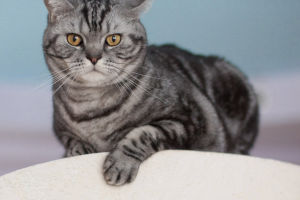By observing your cat's body movements and overall expressions, you can better understand its emotional state.
However, each cat is individual, so it is best to gauge their moods by observing and getting to know your cat over time.
Cats are very independent and fun pets with many signs of happiness. Here are five signs your cat is happy:
1. Relaxed posture: When a cat feels happy and safe, it will usually adopt some kind of relaxed posture, such as lying on the ground with limbs stretched or curled up in a ball. This means the cat is comfortable, not threatened, and can enjoy rest.
2. Open posture: A happy cat will display an open posture, such as ears forward, tail upright or slightly raised, and eyes relaxed and bright. These poses show their curiosity and positive attitude toward their surroundings.
3. Make soft guttural sounds: Happy cats will make some soft and pleasant guttural sounds, such as purring or grunting. It's their way of expressing contentment and relaxation and a way of communicating with humans and other cats.
4. Actively approach and seek interaction: When a cat is feeling happy, it will actively approach its human companions and display affectionate behaviors, such as rubbing heads, licking hands, or jumping on people's legs. They also express joy and contentment by playing, chasing, and demanding interaction.
5. Healthy Appearance and Behavior: Happy cats usually maintain good health. Their coat will be shiny and clean, their eyes will be bright and clear, and they will be energetic and have a good appetite. They also maintain daily self-cleaning behaviors such as licking and grooming to keep themselves tidy.
These are common signs of cat happiness, and you can know your cat is in a happy state when you notice these signs. However, every cat is individual, so it's also important to understand and pay attention to your own cat's habits and preferences.
Cats are sensitive animals and often show certain signs when they are sad or upset. Here are some common signs that cats are sad:
1. Loss of appetite: Sad cats may lose interest in food and have a significant loss of appetite. They may reject foods they usually like and eat only a small amount or not at all.
2. Social avoidance: Sad cats tend to withdraw from humans and other pets, becoming more lonely and withdrawn. They may hide in hidden places, be reluctant to interact with people, and even show indifference to those they used to be close to.
3. Changes in normalcy: A sad cat may show a noticeable behavior change. They may become dull, lethargic, and no longer participate in games or activities. They may sit in the same place for a long time without the energy and curiosity they used to.
4. Vocal change: Sad cats may change their vocal expression. They may become quieter, less vocal, or more mournful and mournful.
5. Body Posture: Sad cats may show some changes in body posture. They may be hunched over, with their tails tucked tightly around their bodies, their ears pushed back or down, and their eyes glazed over.
It is important to note that these signs do not necessarily mean that the cat is necessarily sad, and there may be other causes of health or behavioral problems. If you observe these symptoms in your cat for an extended period, it is best to consult a veterinarian for professional advice.


